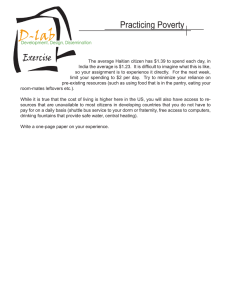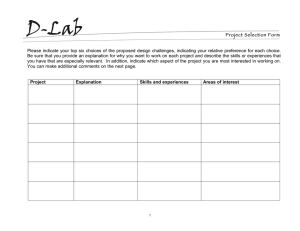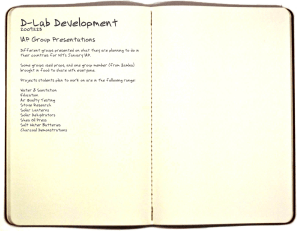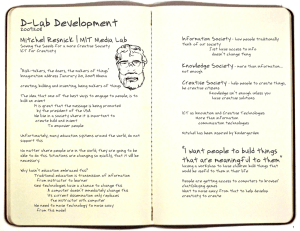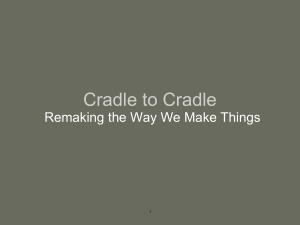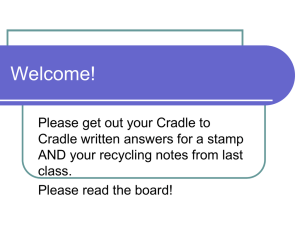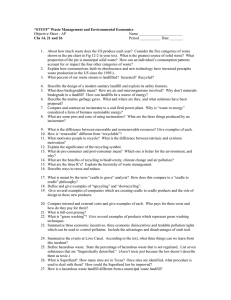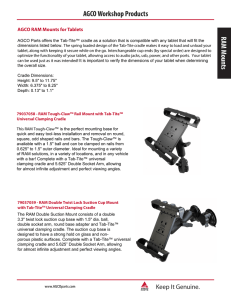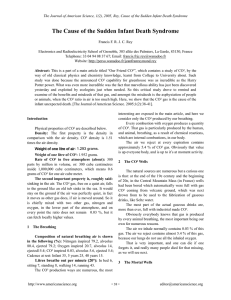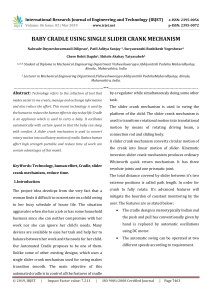SP.723: D-Lab III: Dissemination: Implementing Innovations for the Common Good
advertisement
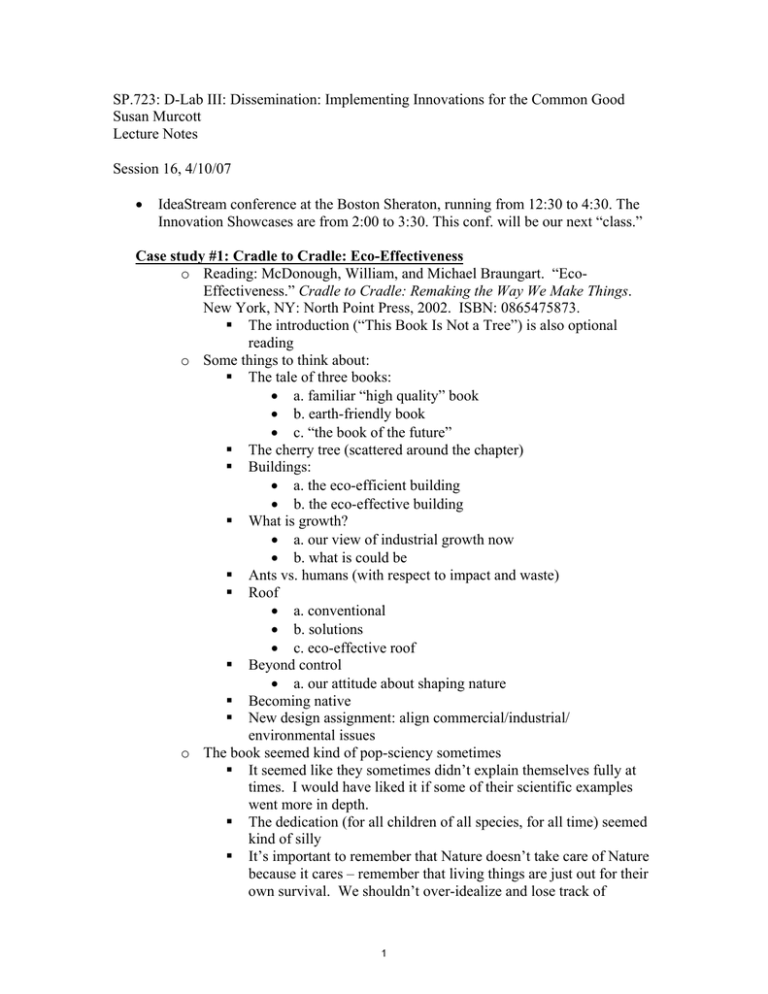
SP.723: D-Lab III: Dissemination: Implementing Innovations for the Common Good Susan Murcott Lecture Notes Session 16, 4/10/07 • IdeaStream conference at the Boston Sheraton, running from 12:30 to 4:30. The Innovation Showcases are from 2:00 to 3:30. This conf. will be our next “class.” Case study #1: Cradle to Cradle: Eco-Effectiveness o Reading: McDonough, William, and Michael Braungart. “EcoEffectiveness.” Cradle to Cradle: Remaking the Way We Make Things. New York, NY: North Point Press, 2002. ISBN: 0865475873. The introduction (“This Book Is Not a Tree”) is also optional reading o Some things to think about: The tale of three books: • a. familiar “high quality” book • b. earth-friendly book • c. “the book of the future” The cherry tree (scattered around the chapter) Buildings: • a. the eco-efficient building • b. the eco-effective building What is growth? • a. our view of industrial growth now • b. what is could be Ants vs. humans (with respect to impact and waste) Roof • a. conventional • b. solutions • c. eco-effective roof Beyond control • a. our attitude about shaping nature Becoming native New design assignment: align commercial/industrial/ environmental issues o The book seemed kind of pop-sciency sometimes It seemed like they sometimes didn’t explain themselves fully at times. I would have liked it if some of their scientific examples went more in depth. The dedication (for all children of all species, for all time) seemed kind of silly It’s important to remember that Nature doesn’t take care of Nature because it cares – remember that living things are just out for their own survival. We shouldn’t over-idealize and lose track of 1 The financial model isn’t very good: taking a project from cradle to cradle is a very expensive proposition You don’t need to think of waste as waste. You can design things for the future so that waste isn’t produced Sometimes you need to inspire people – it’s not all about hard science, it’s about spreading ideas I believe firmly in the ideas that they’re trying to get across, but I feel like the book could have been better written Maybe we can boil their point down to efficiency? Some of the issues we’re discussing are better addressed in the first two chapters of the book (which we didn’t read for class) o How do the economics interact with these ideas? Economics had to happen the way they would. We never would have developed eco-friendly energy if we hadn’t developed energy based on oil first. We wouldn’t be where we are today if the industrial revolution hadn’t happened first. It’s hard for companies to be eco-friendly, because there are only very small, niche markets for that. Change has to come from the top. The government has to act and require change through policy. This kind of change requires money. It’s a lot easier for wealthier people to shop in an eco-friendly way. The poor can’t afford to buy their food at Whole Foods, and poor nations can’t afford to legislate a lot of environmental policy. Do we have the right to tell poor nations that they can’t use fossil fuels to try to industrialize? We used tons of fossil fuels in the days when we were industrializing. Case Study # 2: Rural Energy Technologies and Policies for Development o Readings: Amulya K. N. Reddy, “Energy Technologies and Policies for Rural Development.” http://www.sustainablebusiness.com/features/feature_template.cfm ?ID=956 Steinberg, Douglas, Heidi Rahn, and Andy Horsnell. “Igniting Innovation: A Thought Leaders Strategy Forum.” Meeting Report. o Leapfrog technology jumps o Financial viability o Numbers reached o Cultural Compatibility o Old Paradigm New Paradigm Technology Assessment Market Assessment Economic Viability Donors Æ Equipment 2 MIT OpenCourseWare http://ocw.mit.edu EC.715 D-Lab: Disseminating Innovations for the Common Good Spring 2007 For information about citing these materials or our Terms of Use, visit: http://ocw.mit.edu/terms.
